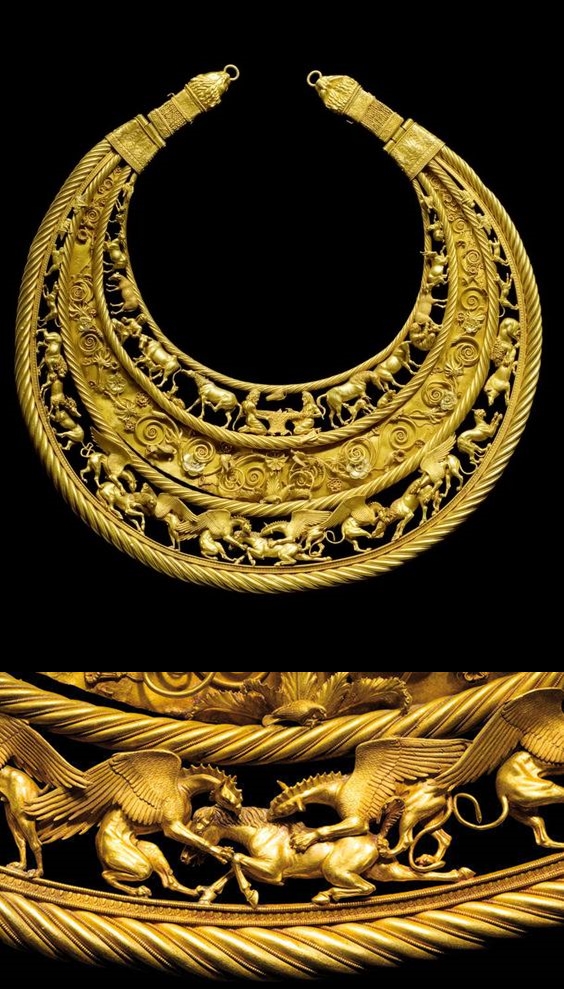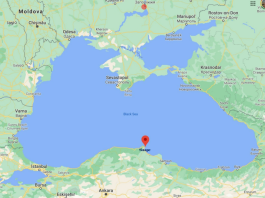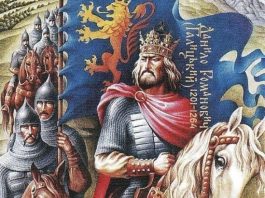Dr. Dmitry Raevsky: “The discovery of this pectoral by the archaeologist from Kyiv B.N.Mozolevskiy in 1971 caused an unprecedented sensation in Scythian studies at least since the time of the excavations of Chertomlyk perhaps even throughout its entire history. Even leaving aside the exquisiteness of the workmanship of this work of art, and it is indeed striking, attention is attracted by the complexity of the compositional solution of the pectoral and by the wealth of mythological information invested in it. B.N.Mozolevskiy has justifiably pointed out that the abundance of images depicted on the pectoral is unparalleled throughout the ancient monuments of Scythia. No less important is the virtuosity with which the artist has achieved the coordination between each image and its place in the composition, reflecting to an equal extent its inherent semantics… there are anthropomorphic figures here as well – heroes of some mythical story or participants in some ritual act – in addition to an extensive repertory of symbolic scenes of battle, and a floral motif, which is interpreted in other works of art as the incarnation of the world tree. Being subordinated to the strict laws of composition, these motifs are organized in a unified pictorial text by using the spatial code…
The first striking thing when one looks at the pectoral is the marked opposition between the character of the scenes depicted at the two extreme registers: on one of them, the female animals nursing their young clearly incarnate birth and the perpetuation of life (naturally, this semantic circle again comprises the motif of the milking of the animals, also associated with fruit-bearing Nature); at the other extreme one can see the battle scenes.
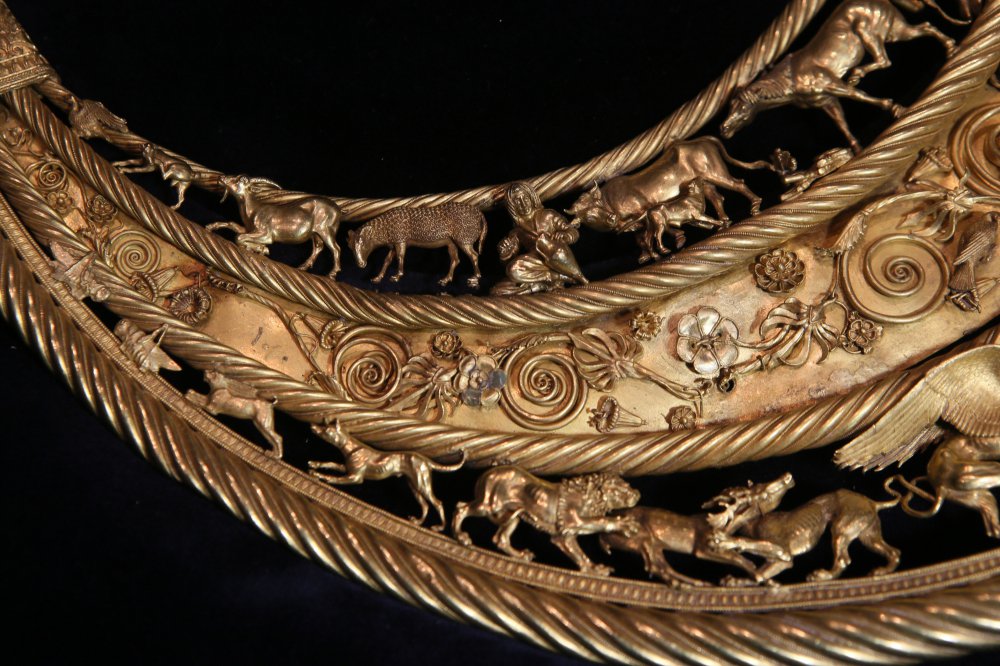
These two friezes are opposed as the world of life and the world of death, which fully correlates with their mutual orientation in the space of the pectoral: the first one being placed higher than the second one, which corresponds to the position of the worlds symbolized by them in the cosmological model analysed earlier.
The uniqueness of the composition of the pectoral consists, however, in the success of the artist to present in one pictorial structure the two spatial subsystems – vertical and horizontal – of that model: indeed, the relation between these friezes demonstrates not only the opposition between “above” and “below“, but also the opposition between the center and the periphery, because the lower frieze seems to encircle the field marked by the upper one. Therefore, the composition of the pectoral clearly suggests that the world of death is localized simultaneously both above the world of the living, and around it in the external zone of the Universe.
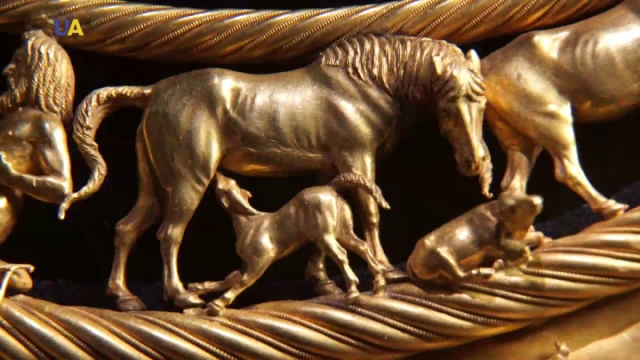
The most remarkable difference between the two parts is that in the right-hand part, the predators are attacking a stag, on the left – a boar. The bird figurines linking the ends of the upper frieze also differ: there is a duck on the right and some bird of prey resembling a falcon on the left.
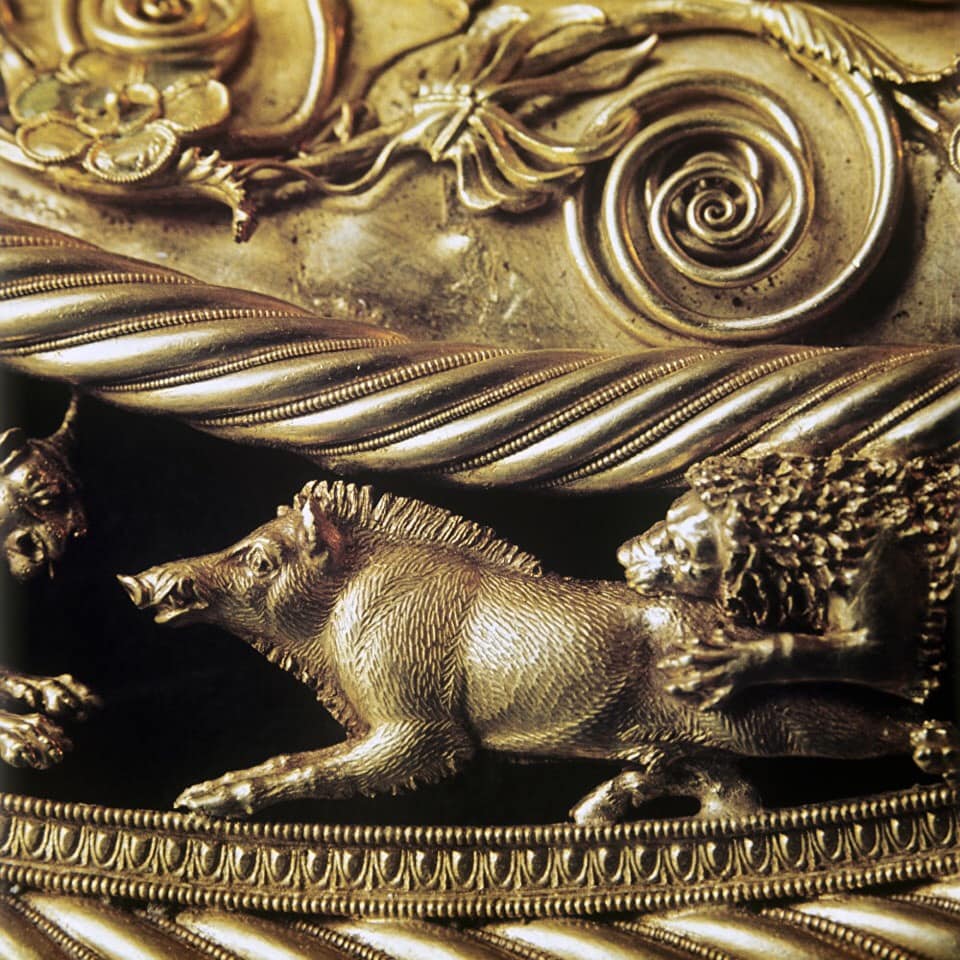
The head of the human figure on the right, in the central scene, has a band-like diadem on his head, which is absent on the head of the person on the left. And finally, the different position of the gorytos with the bow for these figures: the one on the right has the gorytos hanging above his head, whereas for the person on the left it is lying on the ground. A careful scrutiny of this series of differences will reveal that all of them reflect the opposition between “above” and “below” in one way or another: in spatial or semantic (cosmological) terms. This is reflected most clearly by the position of the bows. As regards the diadem, it is a status symbol, perhaps even something like royal insignia for a number of figures in Scythian works of art (e.g. for Heraklcs-Targitaos on the cup from Kul-Oba), hence they marked the top of the social hierarchy…
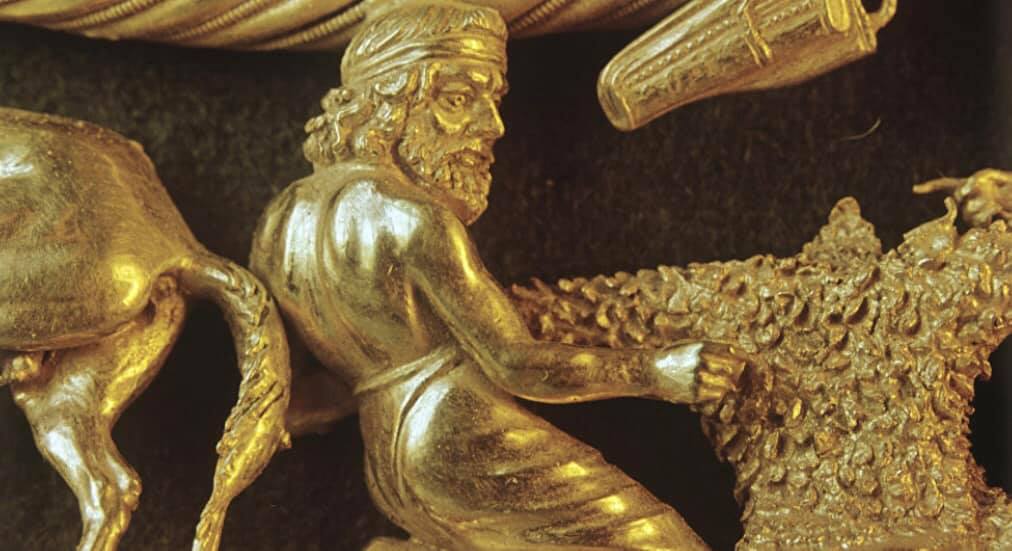
Iit is important precisely which animals were the object of the assault: horses, stags and boars. It is remarkable that the excavations of Tolstaya barrow, where the pectoral was found, yielded the bones of precisely these three animal species- in the trench surrounding the barrow. Such a coincidence is not at all arbitrary. When Scythians performed the burial rite, they usually discarded in the trench the bones of the animals which the participants in the rite consumed in the course of the trisna, i.e. the ritual closely connected with the life that exists in spite of death, and even owing to death. However, we were convinced that such is the idea behind the images on the pectoral: the animals assaulted in the scenes of the lower register died in the name of the act of birth, incarnated in the images in the upper register, this is a sacrifice in the name of the multiplying of domestic animals, which were the biggest wealth of the Scythians. Horses, stags and boars were apparently the traditional set of sacrificial animals for the community to which the dynast buried in the Tolstaya barrow belonged, this is evidenced both by the content of the images on the pectoral, and by the remains of the burial trisna.
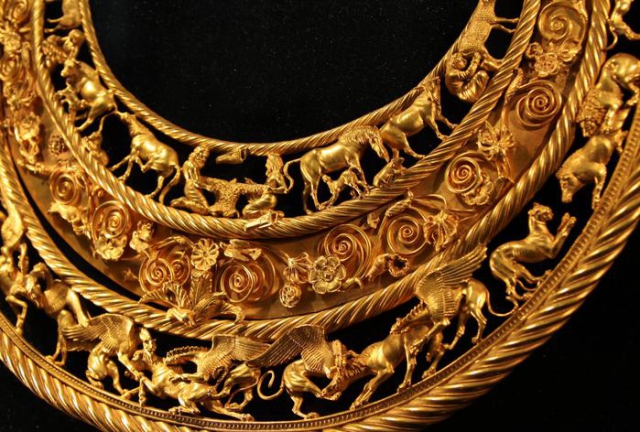
…According to V.N.Toporov’s hypothesis, the trisna ritual among the Indo-Europeans was initially characterized by a ternary structure, again prompted by the same cosmological idea and being expressed in its actual Slavonic name, derived from the root tri- meaning “three“. In connection with the interpretation proposed by him, for this reason the trisna had to comprise the sacrifice of three animals, either of the same or of different species. The pectoral depicts three types of ternary structure: the lower frieze shows the death of three animals, whereby in all three cases the prey is a horse. This interpretation of the meaning of the lower fric/.c on the pectoral correlates well also with the presence of a scene of a hare being chased by a dog. This is one of the pictorial elements of the sacrificing of a hare; earlier we discussed the meaning of this ritual as a means of guaranteeing fertility. The cricket, whose image ends the lower frieze of the pectoral on both sides, is specially associated with the lower world in the different ancient cultures. The fact that crickets arc presented here in pairs, male and female, undoubtedly expresses the same idea about the life-giving function of Nature, to which the entire content of this register is subordinated.”
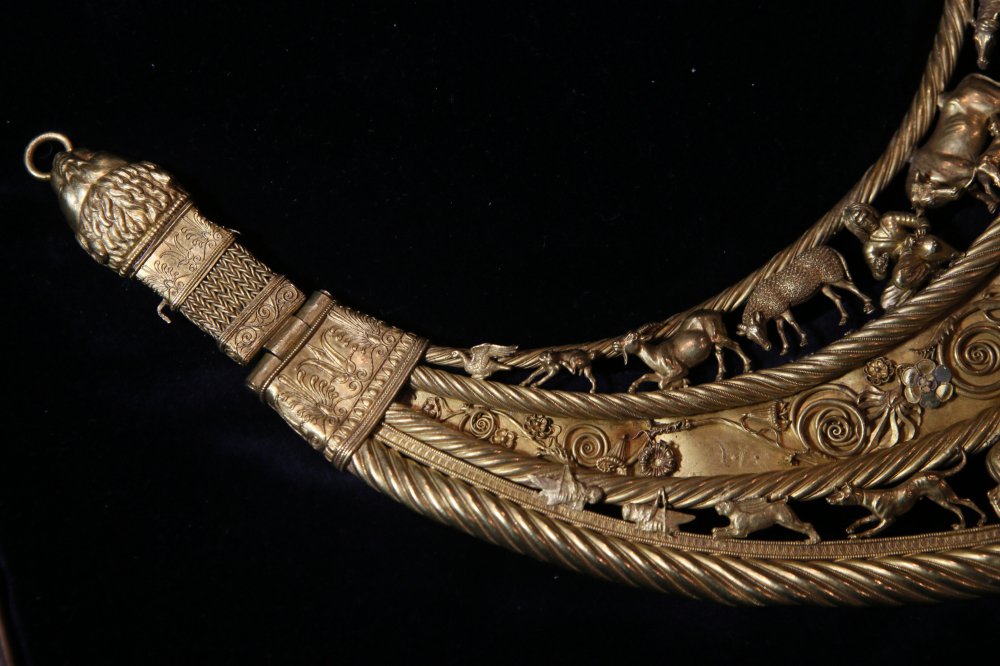
“Royal Scythia, Greece, Kyiv Rus” book has more information about the Pectoral and other amazing artifacts found in Scythian barrows in Ukraine.


